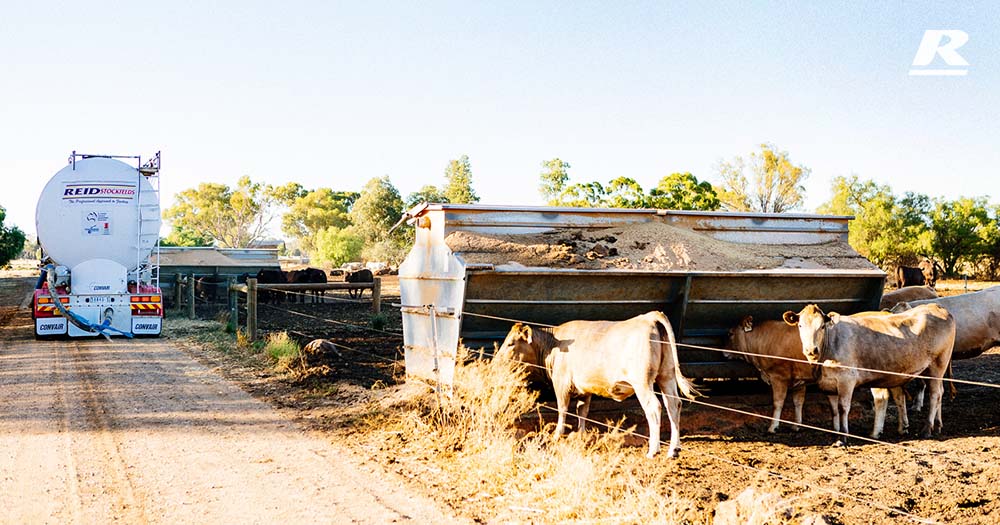What to put in your silo in 2022
In 2022 it is important to identify the opportunities and play to your strengths to ensure that you make the most of the milk price and input cost scenario. In this two part article (second part next month) we will look at the current pricing and relatives feed values of various commodities (grains, protein sources, and forages) and additives, and make sure that the supplements that you feed complement the forages that you have either grown or purchased. Ultimately this is what is going to help you achieve your lactation targets and drive more profit out of your business.

Part 1 – setting the scene for understanding what you need
It is important to first discuss the key profit drivers on a dairy farm – production per hectare, production per cow, stocking rate, pasture utilisation and supplement use.
As a dairy farmer a large proportion of your money is tied up in land. As a business owner your goal should be to try and maximise the return on the money invested. This means that you need lots of profit per unit of your biggest asset, your land. Profit is therefore driven by litres or kg milk solids per hectare (per unit of your biggest asset), which is the product that you are paid for and therefore that underpins your profitability.
Put simply, profit is income minus all expenses. On a dairy farm income is a function of production, and price per unit of product. The only factor that a dairy farmer can control is production. So, if milk price drops, we need to increase litres of milk, or kg of solids, to keep the same amount of revenue. Then as input costs go up, then only way to keep the same margin over costs is to increase revenue, which means producing more. Dilution is the solution every time!
To take this a step further then, production per hectare is a function of production per cow and stocking rate. If the goal is to maximise production per hectare, you need to ensure that you have adequate production per cow to dilute cow maintenance (varies according to the farm but 7000 L is a good start), and enough cows per hectare to optimise pasture utilisation.
The important thing to remember is that the more milk produced per cow, the more her maintenance cost is diluted. Maintenance cost is around 2.5 t dry matter per cow per year and is the single biggest fixed cost on a dairy farm. This means that there is a greater margin per litre for every extra litre that we can get out of her. On top of this, we also dilute the farm fixed costs including heifer rearing expenses.
On a pasture-based farm it is important for pasture intake to at least cover maintenance requirements (the 2.5 t dry matter per cow as mentioned above). However if we can get consumption up to 3-3.5 t dry matter and keep hay/silage to 1-1.5 t (including both home-grown and purchased), the operation has a good chance or being very profitable. The cows should utilise a minimum of 75% of the pasture that is grown (85% ideally). So your goal should always be to grow as much pasture as possible and maximise utilisation percentage.
The role of the supplements is to complement pasture intake and ensure that milk production targets (per cow) are met. Supplements include both purchased and home-grown hay/silage and also grain.
Now that we understand the need for milk and where it fits in terms of profitability, we can get back to feeding for peak… Here are a couple of facts to remember:
- Peak milk sets the cow up for lactation and gives you options. For every litre of milk at peak production the cow should produce at least 220 L (up to 240 L seems possible on a pasture-based system) for the entire lactation. Eg a 36 L peak should translate to a 8000 L lactation. If a cow peaks well there is potential for a big lactation as long as she is fed to maintain an acceptable decline and to regain the body condition at the end of lactation. If she is underfed after peak she won’t do the potential milk, but she at least had the option. If she didn’t peak well in the first place, there is no chance of increasing her profitability later on if something else improves.
- A cow should peak roughly 6 weeks after calving (not in the following spring if she is an autumn calver – this means that you have missed an opportunity!)
- Peak milk production sets peak intake. That is, the higher a cow peaks in milk production, the more food she will eat when here intake peaks about 6 weeks later. The more food a cow can eat at peak intake (roughly 12 weeks into lactation), the easier it will be to maintain a steady decline (7-10% per month after peak) in milk production. Remember that feed conversion efficiency is driven by maximising intake throughout the lactation.
- Body condition at calving (and body condition management after calving) has an enormous impact on the level of peak. Therefore it is vital to dry cows off in good condition 5-5.5 (1-8 scale) and then maintain that through the dry period. The last 3 weeks they should move into a specially formulated transition program. A good transition program is vital in ensuring each cow gets a great start by adapting to a milker diet, meeting energy, protein and fibre requirements, and avoiding health issues at calving – see the lead feeding fact sheet for more information.
If you’d like to increase your livestock farming gains and get professional feeding advice. Call 1300 REID FEED or enquire here >